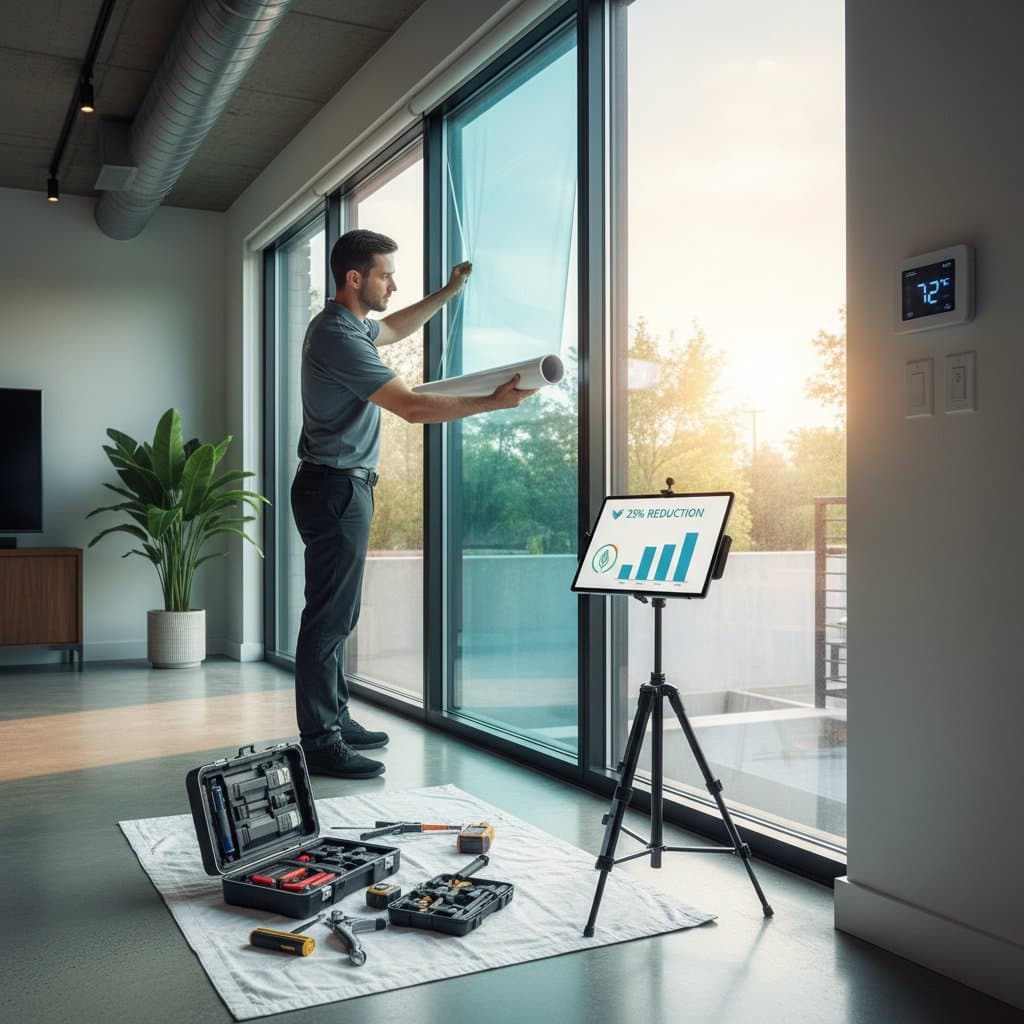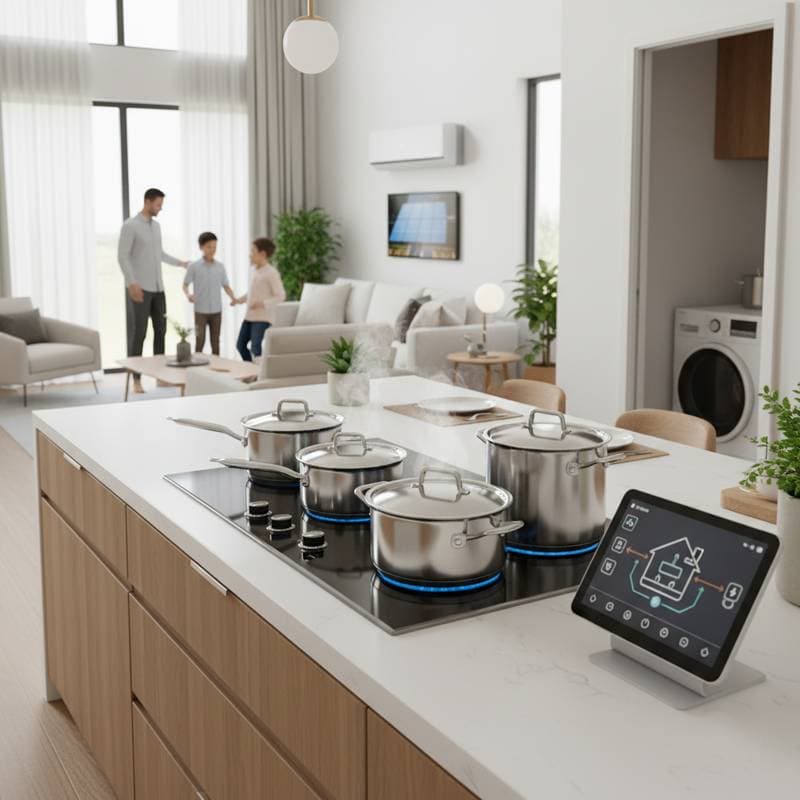Key Points
- Tightening the thermal envelope reduces heating and cooling costs by up to 50 percent through improved air sealing and insulation.
- Targeted upgrades to walls, roofs, windows, and foundations minimize energy loss, enhance comfort, and elevate property value.
- Payback periods generally span five to ten years, influenced by project scope, materials selected, and local energy prices.
- Pairing envelope enhancements with efficient HVAC systems amplifies savings and lowers long-term maintenance requirements.
The Universal Challenge of Energy Loss
Homeowners recognize the discomfort from drafts near windows or cold spots on walls during winter. These issues stem from energy escaping through the home's envelope, which serves as the barrier between conditioned indoor spaces and the exterior environment. Regardless of whether one resides in a humid or dry climate, the core principle remains consistent: a tighter, better-insulated envelope demands less energy from the HVAC system to sustain comfortable indoor conditions.
The potential for improvement proves significant. A thoughtfully planned and implemented envelope upgrade can decrease heating and cooling energy consumption by 40 to 60 percent. Such reductions not only trim utility bills but also stabilize indoor temperatures and elevate air quality, resulting in a home that maintains consistent comfort, operates at lower cost, and retains value effectively across various markets.
Why the Envelope Matters More Than You Think
The building envelope encompasses more than basic walls and roof coverings. It includes all elements that divide interior from exterior spaces: insulation layers, windows, doors, foundations, roofs, and air barriers. These components function interdependently to control how well the home preserves conditioned air.
A sealed and insulated envelope establishes a balanced system. Absent this foundation, even state-of-the-art HVAC equipment operates below optimal efficiency. For instance, a high-efficiency furnace or heat pump struggles to offset losses from uninsulated attics or leaking ducts, allowing paid energy to dissipate through structural gaps.
From an investment perspective, prioritizing envelope enhancements before mechanical upgrades optimizes returns over time. By lightening the HVAC workload, homeowners can select smaller equipment sizes, which cuts initial expenses by thousands and generates further savings throughout the system's service life.
Understanding the Core Components
1. Air Sealing
Air sealing targets gaps and cracks that permit unintended airflow between indoor and outdoor areas. Frequent problem areas encompass attic access points, recessed lights, rim joists, and window perimeters. Even minor openings accumulate to cause substantial energy waste annually.
Professional Tip: Conduct a blower door test to quantify leakage by creating negative pressure in the home and assessing airflow volume. This diagnostic directs precise sealing efforts that boost efficiency without compromising necessary ventilation.
Typical Cost Range:
- DIY methods using caulk and foam: $200 to $600
- Professional whole-home sealing including testing: $1,200 to $2,500
Expected ROI: Annual energy savings of 10 to 20 percent, with payback in three to six years.
2. Insulation Upgrades
Insulation impedes heat movement through walls, ceilings, and floors. Higher R-values indicate stronger resistance to thermal transfer. Selection of insulation type hinges on regional climate, current building materials, and accessible installation sites.
Key Options:
- Blown cellulose: Suited for attics and wall voids; environmentally sound and economical.
- Spray foam: Delivers both insulation and sealing in a single application, though at elevated expense.
- Rigid foam boards: Perform well in basements, exterior walls, and roof assemblies.
- Mineral wool: Offers fire resistance and acoustic benefits, ideal for internal divisions.
Typical Cost Range:
- Attic or wall additions: $1.50 to $4.00 per square foot
- Complete envelope retrofits: $5,000 to $15,000 based on home dimensions
Expected ROI: HVAC energy use drops by 20 to 40 percent, with payback in five to ten years.
3. Windows and Doors
Windows and doors frequently represent vulnerabilities in the thermal envelope. Transitioning to advanced models featuring low-emissivity glass, insulated frames, and multiple panes sharply curtails energy escape.
Professional Tip: When replacement proves impractical, apply storm windows or robust weatherstripping to achieve notable gains at reduced cost.
Typical Cost Range:
- Weatherstripping and insulating films: under $200
- Energy-efficient window replacements: $700 to $1,200 each
Expected ROI: Efficiency gains of 15 to 25 percent, accompanied by enhanced comfort and reduced noise.
4. Roof and Attic Systems
Heat rises naturally, making inadequate attic insulation and ventilation a primary source of loss. Sealing attic openings and installing insulation over the ceiling plane helps regulate temperatures throughout the year.
Professional Tip: Incorporate radiant barriers or cool roof coatings alongside insulation to deflect solar heat and ease cooling demands.
Typical Cost Range: $2,000 to $8,000 for average residences
Expected ROI: Energy cost reductions of 10 to 30 percent, with extended roof durability from moderated temperatures.
The Cost-Benefit Equation
A full thermal envelope retrofit typically represents 3 to 7 percent of a home's market value. However, the accumulating savings and comfort enhancements provide enduring value. Many owners realize a 50 percent cut in HVAC expenses, translating to thousands saved each year.
Example Calculation:
For a household with $3,000 annual heating and cooling costs, a $10,000 upgrade could yield $1,500 in yearly savings. Payback occurs in about seven years, followed by ongoing benefits with low upkeep.
Financing options like energy-efficiency loans or utility programs help manage initial outlays while delivering prompt comfort improvements. A fortified envelope also prolongs HVAC longevity by decreasing operational hours and stress.
Market and Environmental Value
Buyers focused on sustainability value efficiency highly, and certified envelope upgrades boost resale appeal. Real estate experts note that properties with proven energy features fetch 3 to 8 percent premiums over comparable unupgraded homes.
Environmentally, each conserved kilowatt-hour lowers carbon emissions. Envelope retrofits offer an economical route to emission reductions without lifestyle compromises. Modern materials enhance longevity, minimizing replacements and waste over the home's lifespan.
Health and Comfort Advantages
Improved envelopes enhance indoor air quality by limiting infiltration of dust, pollutants, and allergens. Paired with proper ventilation, this fosters a cleaner, more even environment.
Effective moisture control prevents condensation issues that foster mold or damage structures. These upgrades safeguard the home and promote well-being via consistent humidity and temperatures.
Adapting Solutions to Different Budgets
Homeowners can implement upgrades incrementally to match financial constraints and priorities.
Entry-Level Strategy:
- Seal windows, doors, and attic entries
- Insulate reachable attic sections
- Fit door sweeps and electrical outlet seals
Mid-Range Strategy:
- Enhance wall and crawl space insulation
- Install ENERGY STAR windows for older units
- Add a smart thermostat for system optimization
Comprehensive Strategy:
- Perform full air sealing with testing
- Apply continuous exterior insulation and premium windows
- Integrate zoned HVAC and ventilation systems
Progressive implementation ensures each investment advances overall efficiency.
Professional vs. DIY Considerations
Basic tasks like caulking gaps or applying weatherstripping suit skilled DIY efforts. Advanced work, such as spray foam installation or comprehensive testing, demands professional expertise and equipment to avoid risks like moisture entrapment or ventilation shortfalls.
Seek contractors certified by groups like the Building Performance Institute or RESNET. Quality providers conduct pre- and post-work assessments to confirm measurable gains.
Financing and Incentive Opportunities
Numerous resources aid efficiency projects. Energy-efficient mortgages incorporate upgrade costs into home loans. Rebates from utilities and tax credits diminish direct expenses, while some programs offer incentives based on achieved savings.
Research rebates and documentation needs prior to starting. Accurate records maximize available support.
Frequently Asked Questions
How do I determine if my home requires an envelope upgrade? Uneven temperatures, noticeable drafts, or elevated bills signal potential issues. An energy audit delivers a detailed improvement plan.
Will excessive sealing lead to ventilation concerns? Balanced systems prevent this. Controlled airflow with intentional fresh air intake replaces random leaks, upholding air quality alongside efficiency.
Which upgrade provides the quickest return? Air sealing yields rapid results due to low cost and instant impact. Pairing it with attic insulation heightens outcomes.
Do envelope upgrades influence resale value? Affirmative. Verified efficiency and utility savings serve as compelling market advantages.
Are ongoing maintenance needs significant? Routine checks of seals, insulation, and vents suffice. Quality installations endure for decades with little intervention.
Steps to Secure Your Home's Efficiency
View the envelope as a core asset to shift focus from expense to enduring worth. Investments in sealing, insulation, and quality components yield reliable returns in comfort, resilience, and operational savings.
Incremental or full-scale changes alike diminish HVAC demands, curb emissions, and fortify the home. Strengthening the thermal envelope invests in a future of sustained comfort, health, and economic prudence within a secure structure.










